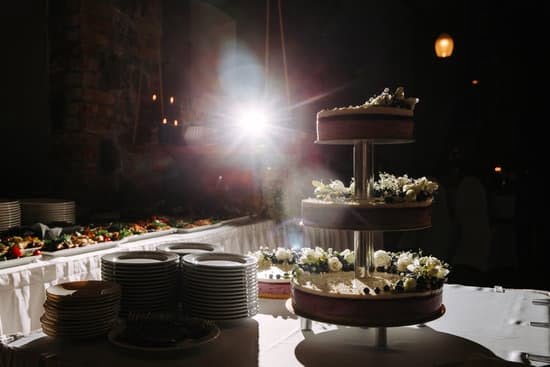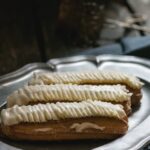Are you ready to dive into the delightful world of candy cake decor? From ancient times to modern trends, the use of candy as a decorative element for cakes has evolved into an art form. Whether you’re a professional pastry chef or a home baker, this article will explore the history, creative ideas, and practical tips for incorporating candy into your cake designs. Get ready to discover the sweet and colorful possibilities of candy cake decor.
The history of candy cake decor dates back to ancient times when people used natural ingredients like fruits and nuts to adorn their sweet treats. Over the years, this practice has evolved with the introduction of various types, flavors, and colors of candies. In this section, we’ll take a closer look at how the tradition has transformed into modern trends, inspiring professional decorators and home bakers alike to push the boundaries of creativity.
When it comes to choosing the right candy for cake decor, there’s a wide array of options to consider. From traditional favorites like chocolate and gummy bears to trendy additions like edible glitter and fondant shapes, each type brings its own unique texture and flavor to the design.
We’ll delve into the different types of candies available, as well as how their flavors and colors can complement specific cake themes. Whether you’re aiming for a whimsical children’s party or an elegant wedding celebration, there’s a perfect candy decor waiting for your creation.
The History of Candy Cake Decor
Ancient Origins
In ancient civilizations such as Egypt and Mesopotamia, honey was often used to sweeten and decorate cakes and pastries for special occasions. The Greeks and Romans took this a step further by creating elaborate confections made from nuts, fruits, and honey to adorn their desserts.
Medieval Influence
During the Middle Ages, sugar became more widely available in Europe, leading to the development of intricate sugar sculptures and decorations for grand feasts. These edible works of art were often used as a status symbol for noble households and were reserved for special events.
Modern Trends
In today’s world, candy cake decor has become more accessible than ever, with a wide range of options available to suit every taste and style. From vibrant sprinkles and colorful candies to sophisticated chocolate embellishments, modern cake decorators have a plethora of choices when it comes to adding a touch of sweetness to their creations.
Whether it’s a whimsical birthday cake or an elegant wedding dessert, the history of candy cake decor continues to inspire bakers to explore new creative possibilities.
Choosing the Right Candy for Cake Decor
When it comes to choosing the right candy for cake decor, there are a wide variety of options to consider. From different types and flavors to a rainbow of colors, the possibilities are endless. One of the most popular choices for candy cake decor is fondant, which can be shaped and molded into intricate designs. Additionally, hard candies, gummies, chocolate, and sugar confetti are all great options for adding texture and visual interest to your cake.
In terms of flavors, it’s important to consider how the taste of the candy will complement the flavor of the cake. For example, if you’re making a rich chocolate cake, you may want to opt for sweeter candies like gummy bears or colorful sprinkles. On the other hand, if you’re working with a light and fruity cake, tangy citrus-flavored candies or dried fruit pieces could be the perfect choice.
Color also plays a crucial role in candy cake decor. Whether you’re aiming for a whimsical and playful design or an elegant and sophisticated look, choosing the right color scheme is essential. Bright and vibrant candies can add a pop of color to your cake, while pastel shades can create a more delicate and refined appearance. Ultimately, selecting the right type, flavor, and color of candy for your cake decor is about creating a harmonious and visually stunning masterpiece.
| Candy Type | Flavor | Color |
|---|---|---|
| Fondant | Neutral (vanilla) | Various |
| Hard Candies | Assorted (fruit-flavored) | Multicolored |
| Gummies | Variety (fruit-flavored) | Bright & amp; Vibrant |
Creative Candy Cake Decor Ideas
When it comes to decorating cakes with candy, the possibilities are endless. From colorful gummy bears to delicate edible flowers, there are numerous ways to add a unique and stunning design to your cake using candy. Here are some creative candy cake decor ideas and tips that will take your cake to the next level.
Color Coordination
One of the key elements of creating a visually appealing candy cake decor is color coordination. When choosing candies for your cake, consider the color scheme you want to achieve. Whether you’re going for a rainbow effect or a more monochromatic look, selecting candies in complementary colors will help create a cohesive and eye-catching design.
Texture Contrast
In addition to color, texture plays a crucial role in candy cake decor. Mix it up by incorporating candies with different textures such as smooth chocolate dragees, crunchy sprinkles, chewy gummies, or hard candy beads. This contrast in textures will not only add visual interest but also create an interesting mouthfeel for those indulging in your delicious creation.
Strategic Placement
When applying candy decorations to your cake, think strategically about their placement. Consider creating patterns or arranging the candies in a way that creates movement and flow across the surface of the cake. You can also use different sizes of candies to add dimension and depth to your design.
By following these creative ideas and tips for candy cake decor, you can elevate your cake decorating skills and impress your friends and family with stunning and delicious creations that are sure to be remembered long after they’ve been devoured.
Step-by-Step Guide
The process of applying candy decorations to your cake can be both fun and challenging. With the right techniques and a little creativity, you can take your cake from ordinary to extraordinary. Whether you’re a beginner or have some experience in cake decorating, here are some step-by-step tips for successfully applying candy decor to your cakes.
First, it’s important to choose the right type of candy for your cake decor. Hard candies, gummy candies, chocolate pieces, sprinkles, and edible glitter are just a few options to consider. Each type of candy provides a different texture and flavor to your cake, so think about the overall look and taste you want to achieve.
Once you’ve selected your candy decorations, it’s time to prepare your cake. Make sure the surface of your cake is clean and free from any crumbs or icing smudges. If necessary, use a thin layer of frosting or edible glue as an adhesive for the candies. Then, carefully place the candies onto the cake in your desired design. For more intricate designs, consider using tweezers or toothpicks to help with placement.
Next, consider adding dimension to your candy decor by mixing different shapes and sizes. For example, layering smaller candies on top of larger ones can create depth and visual interest. Additionally, incorporating a variety of colors will make your cake pop. Lastly, make sure to secure any loose pieces with additional frosting or edible glue to prevent them from falling off.
| Step | Description |
|---|---|
| 1 | Choose the right type of candy for decor |
| 2 | Prepare the surface of the cake |
| 3 | Carefully place candies onto the cake in desired design |
Beyond the Basics
When it comes to advanced candy cake decor, there are endless possibilities for creating intricate and stunning designs that will take your cakes to the next level. Here are some tips and techniques for elevating your candy cake decor game:
- Use of Fondant: Incorporating fondant into your candy cake decor can add a level of elegance and sophistication to your designs. Whether you’re creating custom fondant shapes or using it as a base for your candy decorations, this versatile ingredient can help achieve a polished look.
- Advanced Sculpting: If you’re looking to take your candy cake decor to the next level, consider exploring the world of sculpting with candy. From creating lifelike flowers and intricate details to sculpting edible figures and objects, sculpting can add a wow factor to your cakes.
- Mixing Candy Mediums: Experiment with combining different types of candies as well as other edible mediums like chocolate, marzipan, or sugar paste to create multidimensional and eye-catching designs on your cakes.
It’s important to remember that advanced candy cake decor requires practice, patience, and creativity. Don’t be afraid to push the boundaries and try new techniques in order to achieve one-of-a-kind designs that will leave a lasting impression.
In addition, paying attention to color theory, balance, and composition is crucial when delving into advanced candy cake decor. Understanding how colors work together and how to create visually appealing arrangements will help you create show-stopping designs that are not only beautiful but also harmonious.
Ultimately, by embracing advanced techniques and experimenting with different designs, you’ll be able to elevate your candy cake decor skills and create truly unique and breathtaking cakes that will delight both the eyes and the taste buds.
Spotlight on Professional Candy Cake Decorators
Professional candy cake decorators are the artists behind some of the most stunning and intricate cake designs. These talented individuals have dedicated their careers to creating beautiful, delicious, and unique candy cake decor that has captivated the hearts and taste buds of many. Through interviews and inspirational stories, we gain insight into the world of professional candy cake decorators and discover what drives their passion for this craft.
Interviews with professional candy cake decorators provide a glimpse into their creative process, sources of inspiration, and the techniques they use to bring their confectionery masterpieces to life. From renowned pastry chefs to independent artists, each story reveals the dedication and artistry that goes into perfecting the art of candy cake decor. In these interviews, professionals often share valuable tips and tricks that can inspire both novice and experienced bakers to elevate their own creations.
One such inspirational story is that of Sarah Johnson, a self-taught candy cake decorator who turned her passion for baking into a successful business. Sarah’s journey began as a hobby in her home kitchen but quickly grew into a thriving career after gaining recognition for her innovative approach to candy cake decor. Her story serves as motivation for aspiring decorators, proving that with dedication and creativity, anyone can turn their love for sweets into a fulfilling profession.
These accounts of professional candy cake decorators not only showcase their remarkable talent but also serve as a source of encouragement for those looking to pursue a career in this specialized field. By learning from their experiences and embracing their passion for candy cake decor, aspiring decorators can expand their skills and contribute to the ever-evolving world of confectionery artistry.
The Perfect Pair
When it comes to creating a visually stunning and delicious cake, the pairing of candy decor with cake flavors and themes is crucial. Matching the right types, flavors, and colors of candies with the overall theme and taste of the cake can elevate the design to a whole new level.
Whether you’re planning a children’s birthday party with a whimsical theme or a sophisticated wedding cake, choosing the perfect pair of candy decor is essential for creating an eye-catching and delectable masterpiece.
One important aspect to consider when matching candy decor with cake flavors is to complement rather than overpower. For instance, if you’re working with a rich chocolate cake, consider using complementary candy decorations such as dark chocolate shavings, chocolate-covered strawberries, or even salted caramel candies for added flavor depth.
On the other hand, if your cake has a lighter flavor profile such as vanilla or lemon, opting for colorful and fruity candies like gummy bears, fruit slices, or edible flowers can enhance the overall look and taste.
In terms of matching candy decor with cake themes, creativity knows no bounds. For example, if you’re creating a beach-themed cake for a summer celebration, incorporating candy seashells, ocean-inspired blue hues in various forms like rock candy or gumballs can bring your theme to life.
Additionally, for a winter wonderland-themed cake, utilizing white and silver-colored candies such as shimmering sixlets, snowflake-shaped jellies, or peppermint sticks can tie in beautifully with the theme while adding an extra layer of sweetness to your creation.
Overall, when it comes to matching candy decor with cake flavors and themes – experimentation is key. With careful consideration and creativity in mind, finding that perfect pair will result in an aesthetically pleasing and delicious masterpiece that will leave everyone impressed.
DIY Candy Cake Decor
For home bakers who want to add a touch of sweetness and creativity to their cakes without breaking the bank, DIY candy cake decor is the perfect solution. With a little bit of imagination and resourcefulness, you can create stunning and budget-friendly designs that will impress your friends and family. From simple techniques to unique ideas, there are endless possibilities when it comes to decorating your cakes with candy.
One cost-effective way to incorporate candy into your cake decor is by using everyday candies that you can find at any grocery store. Gummy bears, M&M’s, chocolate chips, and licorice are just a few examples of affordable options that can be used to adorn your cakes. By strategically placing these candies on your cake, you can create beautiful patterns, borders, or even 3D designs that will surely captivate everyone’s attention.
Additionally, using homemade or store-bought frosting as “glue” for your candy decorations is an inexpensive and effective way to ensure that they stay in place. This allows for endless possibilities in terms of design and arrangement, all while keeping costs low.
By opting for DIY candy cake decor, you can create a visually stunning masterpiece without having to spend a fortune on expensive decorating tools or materials. So go ahead: unleash your inner creativity and transform your plain cakes into eye-catching confections with the magic of candy.
Conclusion
In conclusion, the world of candy cake decor offers a delightful and creative way to enhance the visual appeal and taste of your baked creations. From its ancient roots to modern trends, the history of candy cake decor showcases the enduring popularity of this colorful and sweet art form. With a wide variety of candy types, flavors, and colors to choose from, there are endless possibilities for creating stunning designs that will impress and delight your guests.
Whether you are a novice baker or an experienced professional, there are tips, tricks, and step-by-step guides available to help you achieve the perfect candy cake decor. Additionally, advanced techniques and designs provide ample inspiration for those looking to take their skills to the next level. Matching candy decor with cake flavors and themes is also an important aspect to consider in order to create a harmonious and visually appealing final product.
From interviews with professional candy cake decorators to DIY budget-friendly ideas for home bakers, there is no shortage of resources available for anyone looking to embrace the sweet and colorful world of candy cake decor. So why not add a touch of whimsy and creativity to your next baking project with some fun and delicious candy decorations?
Let your imagination run wild as you explore the endless possibilities that candy cake decor has to offer in making every confectionery creation truly extraordinary.

Welcome to our cake decorating blog! My name is Destiny Flores, and I am the proud owner of a cake decorating business named Cake Karma. Our mission is to provide delicious, beautiful cakes for all occasions. We specialize in creating custom cakes that are tailored specifically to each customer’s individual needs and tastes.





